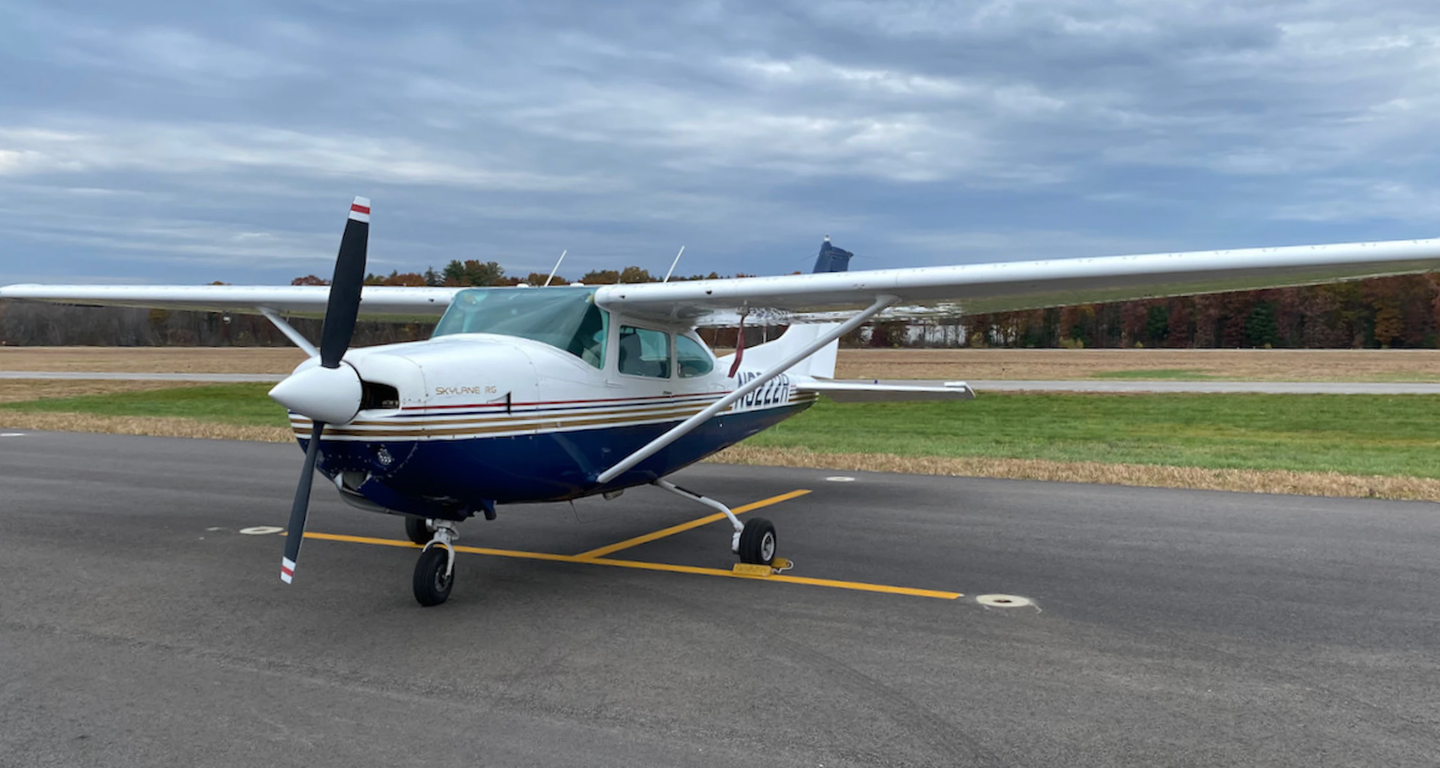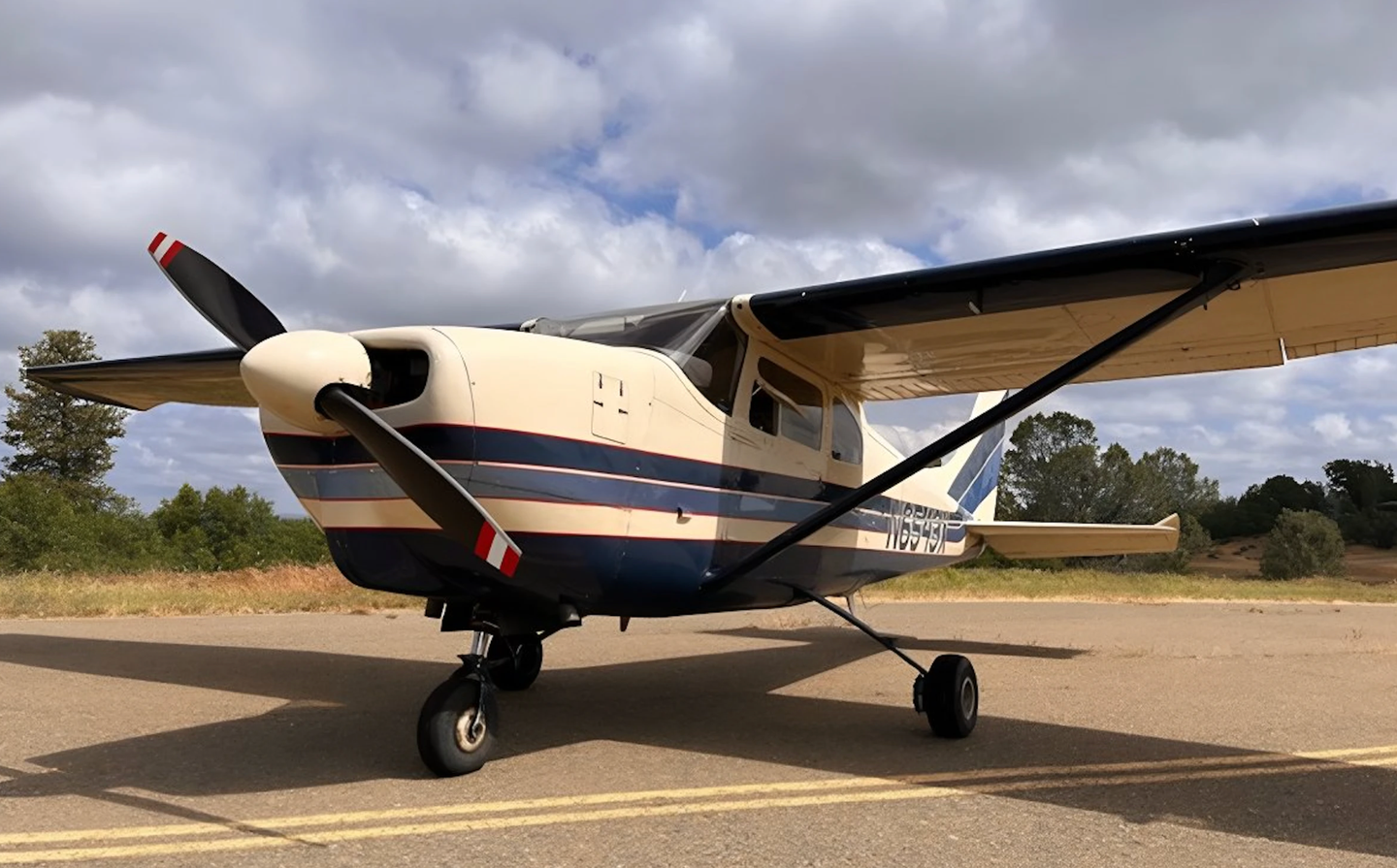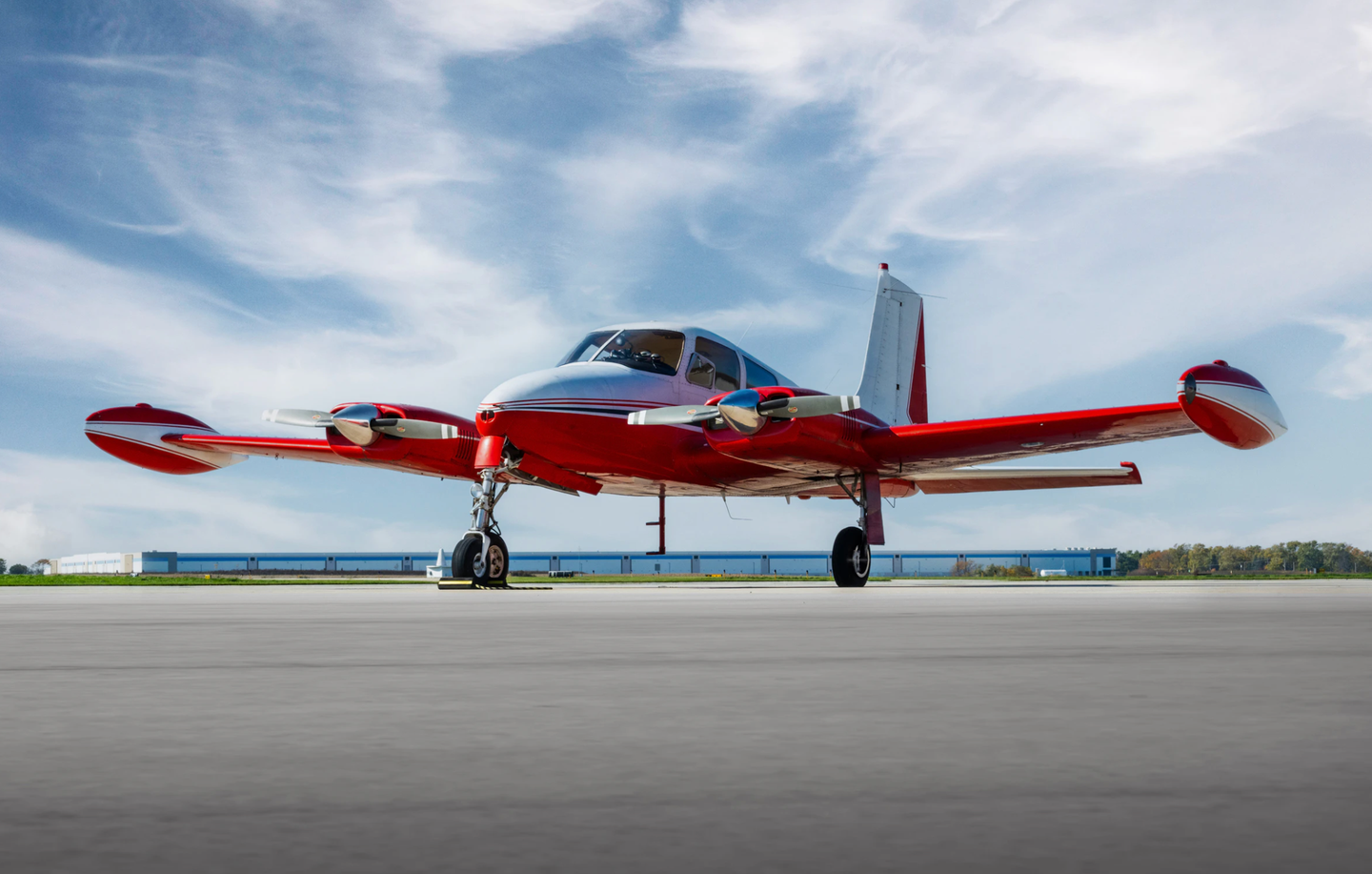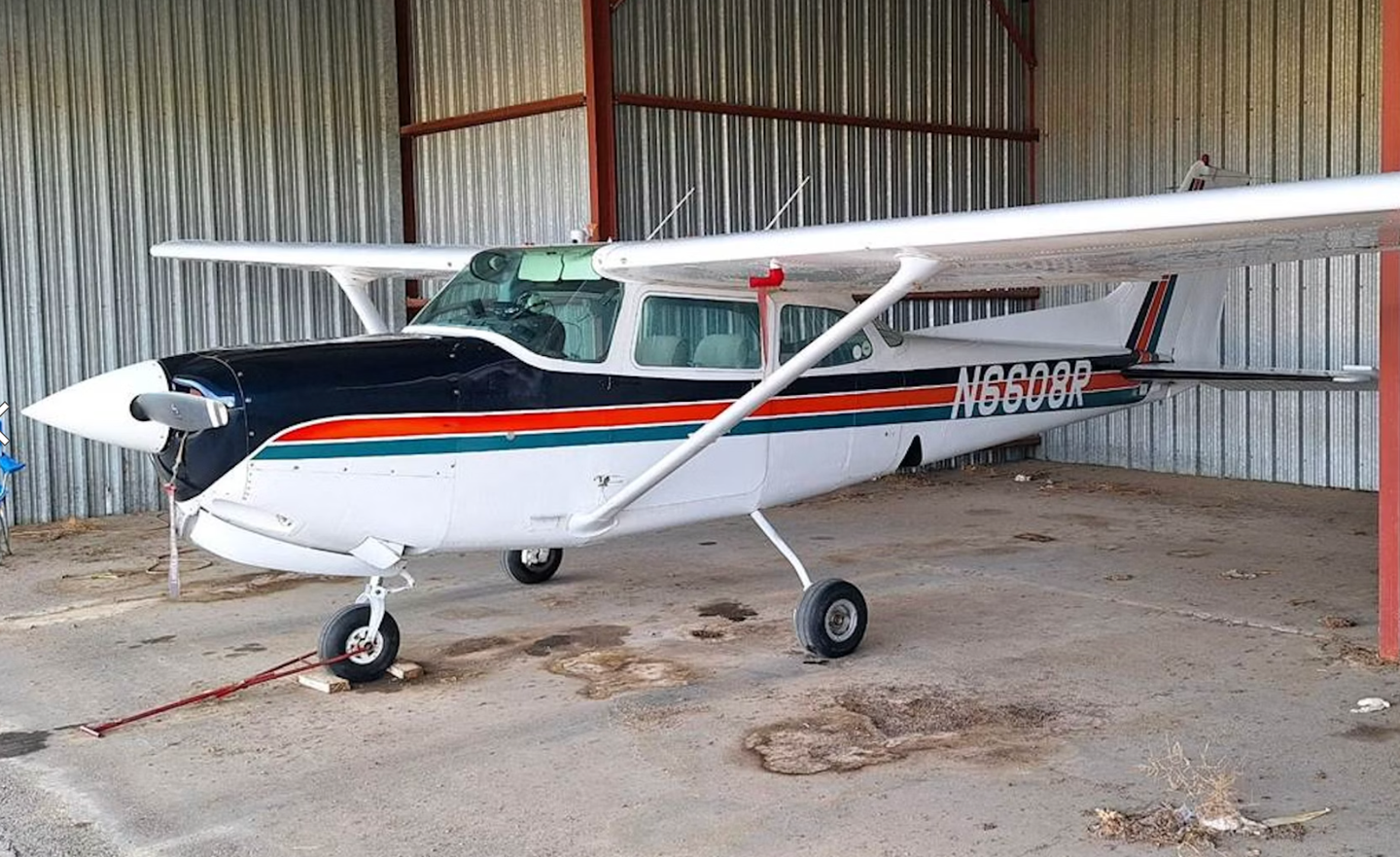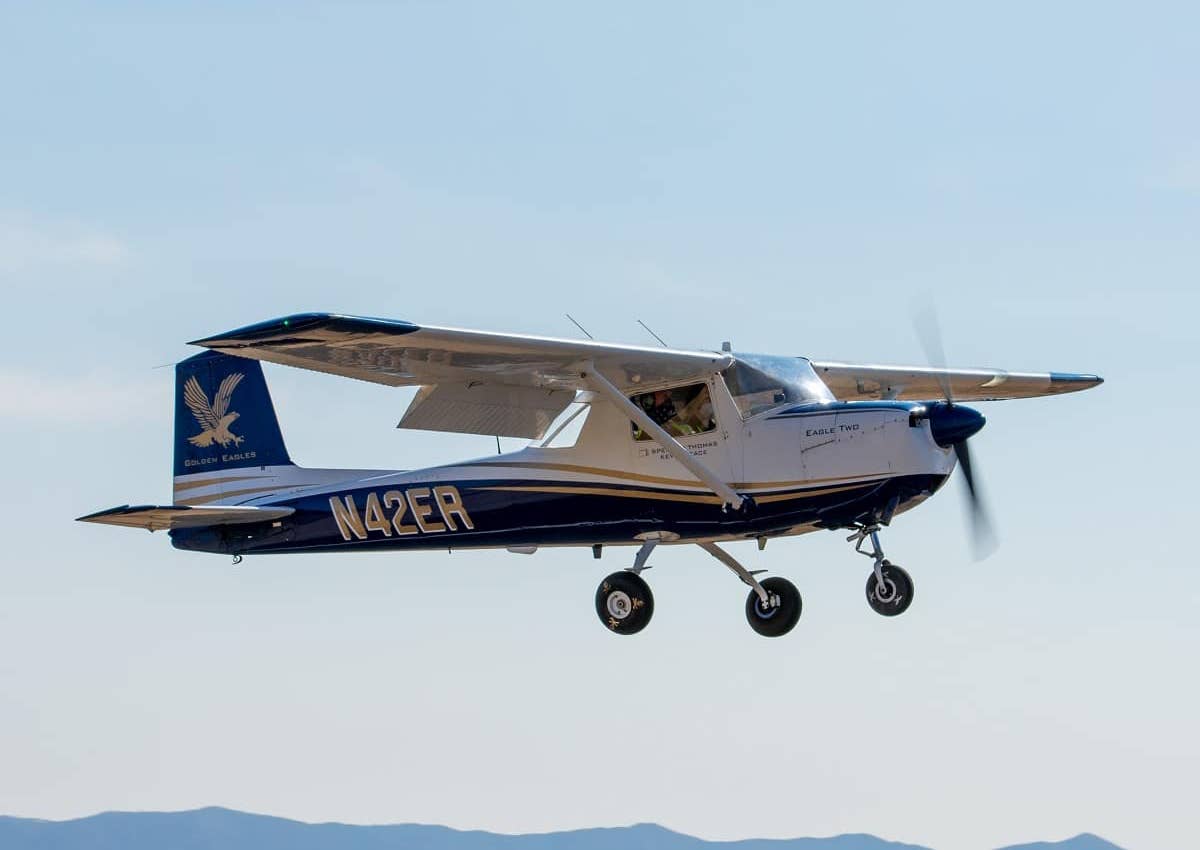The Cessna G1000 Skyhawk
The best-selling airplane of all time gets more sophisticated
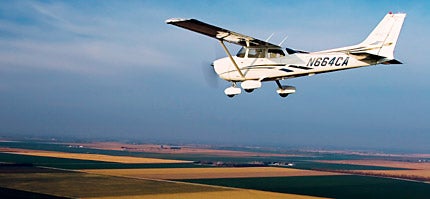 Since the demise of the Cessna 152 in 1986, the Skyhawk has emerged as perhaps the preeminent general aviation trainer on the market. It may be ideal for that role, because it's one of the world's most forgiving airplanes, but until recently, no one considered it a technologically sophisticated airplane.
Since the demise of the Cessna 152 in 1986, the Skyhawk has emerged as perhaps the preeminent general aviation trainer on the market. It may be ideal for that role, because it's one of the world's most forgiving airplanes, but until recently, no one considered it a technologically sophisticated airplane.
That may, however, be an unfair assessment. Like lots of pilots, I've spent many hours in the left seats of a variety of 172s. The airplanes are, after all, virtually everywhere. In the past 50 years, Cessna assembled nearly 40,000 of them, making the 172 the most produced airplane in history, by far. (The Sturmovik, a Russian World War II fighter, comes in a feeble second place with 36,000 units produced.) It's not surprising, therefore, that more general aviation pilots have flown Skyhawks than any other plane.
Though many marvel at the Skyhawk's remarkable jack-of-all trades adaptability to a variety of missions, its extremely easy handling and its seemingly indestructible nature, it is these very qualities that cause the plane to be taken for granted. With the advent of the Diamond C1, Liberty XL2, Legend Cub and other entry-level two-seaters, the venerable Skyhawk has become economically disadvantaged in the trainer market.
The new wave of two-seaters, however, has not supplanted the population of Skyhawks utilized by countless flight schools across the nation. Its reputation as a reliable, versatile and modestly inexpensive trainer also makes it a popular rental and, occasionally, a check hauler or light-cargo machine.
Jessica Ambats, a features editor at Plane & Pilot, is currently training in an older Skyhawk. Jessica has logged most of her hours in older Skyhawks, but she spent an afternoon familiarizing herself with the new Skyhawk SP.
Tom's Aircraft in Long Beach, Calif., recently loaned me a Garmin G1000-equipped Skyhawk SP fresh off the Independence, Kan., production line---I put Jessica in the left seat. How did the student pilot react to the sexy glass-paneled Skyhawk?
"From the outside, the basic design doesn't look that different from my trainer," said Jessica. "Obviously, this is a newer airplane with different paint, but there aren't that many significant changes in appearance.
"Open the door, however, and you can see plenty of improvements," commented Jessica. "I first noticed the shoulder harness airbags in the cockpit, a reassuring feature, and I understand they're standard equipment on all Skyhawks. The airplane's full-flap stall speed is below 50 knots, and airbags can protect car drivers at that speed, so there's no reason they can't do the same for pilots. The straps of the harness itself were comfortable, too, a welcome change from the older airplanes."
In fact, Cessna improved the interiors on its 2006 models with a softer, lighter and higher-grade leather, in addition to new carpeting and side walls. The company also made some significant changes to interior lighting on the entire single-engine line. Overhead panel and pedestal lights were improved to provide better illumination, especially for the flap control and power quadrant.
The 2006 model's takeoff performance was similar to that of Jessica's trainer. The writer/photographer trains out of Santa Monica Airport near L.A.'s Wilshire District, so the ability to take off in a short distance is important. "Santa Monica is adjacent to Beverly Hills, Brentwood and Malibu, all noise-sensitive areas, and the Skyhawk SP is a reasonably good neighbor---fairly quiet in the first place, plus it gets off in less than 1,000 feet," Jessica commented. "That usually lets it ascend to at least 500 feet before it gets anywhere near residential areas."
Jessica was impressed by the electric trim on the Skyhawk's yoke, primarily because she's been obliged to use manual trim as a student pilot. "I kept forgetting and reaching for the trim wheel," she laughed. "I appreciated the relocation of the headset jacks, too: they're easy to find in plain view. On some of the older airplanes, they can be in rather awkward places---sometimes out of sight under the panel."
Though this was her first experience with the G1000, the student pilot had a special appreciation for the Garmin system. "The glass panel definitely adds intrigue. Flying behind those two big screens is like being inside a life-size video game," she commented. "The weather was near perfect for our flight, and I found myself looking at the multifunction display on the right far more than the primary flight display (PFD). I tried to use the rolling tapes on the PFD for altitude and airspeed, but perhaps predictably, I wound up scanning the backup, two-inch-round gauges instead. Pretty soon, however, I got used to looking at the PFD for all the information.
"The Garmin multifunction display was very impressive. It annunciated all the surrounding traffic through the Mode S Traffic Information Service (TIS) uplink and also provided me with good positional awareness with reference to the local landmarks," said Jessica. "That's especially important when flying in the Los Angeles Basin, where there's so much special-use airspace. You can keep track of your position with reference to the borders of the Class B, C and D areas. Another nice feature is the auto-zoom that automatically reduces the scale and highlights the airport diagram as you get closer. Flying into Long Beach with its complicated pattern of 10 runways would have been a lot tougher without the G1000's expansive display of the airport."
For 2006, Garmin and Cessna have upgraded the Skyhawk's G1000 to include a number of improvements, including a more sophisticated terrain awareness warning system (TAWS) and more universal traffic information.
Getting back to the Skyhawk, the budding pilot felt that in-flight handling was crisper and more positive than in her trainer. She also noticed the SP's extra 20 horsepower. "There was no question that throttle response was slightly quicker and more enthusiastic," she noted. "Climb seemed a little better, too."
In fact, though there's a slight climb improvement in the SP, the primary benefit of its additional horsepower is a higher gross weight that generates additional payload. Cruise and climb rate are only slightly better, and both the new and the old airplanes feature the same 53-gallon fuel capacity, but the Skyhawk SP's 2,550-pound gross weight (100 pounds more than in the Skyhawk R) provides it with a 77-pound payload advantage. In theory, at least, a basic SP could fly away with nearly 900 pounds of useful load. If you need to haul a heavier load, the SP is the plane for you.
In cruise mode, the SP does its best work at 8,500 feet. Max cruise speed is 124 knots on about 10 gph, so the airplane has a realistic four-hour endurance plus reserve at 75%. Throttled back to 55% at 10,500 feet, you can expect about 106 knots on nearly 8 gph. That extends range to more than 600 nm.
Jessica felt that slow flight and landing characteristics were similar to that of the older Skyhawk model, but she was still impressed with the new airplane's tighter controls and slightly quicker response. "Another nice feature is that the nosewheel tracks straight without any shimmy, which is a nagging problem on some of the older airplanes."
Pricing for the SP version of Cessna's most popular airplane starts at $180,00 for the basic machine, and if you pull out all the stops, you can easily top $260,000 for a Garmin G1000 version with air conditioning and every other option. If that seems steep for a Skyhawk, consider the talent of the machine it buys; full-on autopilot, TAWS-B terrain warnings, TIS traffic uplink with Mode S transponder, XM cockpit weather display. Name a feature you'd want in an airplane---the G1000 Skyhawk SP probably has it.
And so the Skyhawk soldiers on into its second half-century, a far better airplane than the original, but granted a level of electronic sophistication unheard of in 1956. Okay, so perhaps the Bonanza has been around slightly longer, though some could argue the current six-seat, 300 hp A-36 is a far cry from the original, four-place, 165 hp model 35.
Still, despite (or perhaps because of) the 172's new avionics suite, the Skyhawk SP remains the gentle friend it has been for 50 years---always tolerant, patiently obedient and consistently eager to please.
SPECS: 2006 Cessna 172S Skyhawk SP

Subscribe to Our Newsletter
Get the latest Plane & Pilot Magazine stories delivered directly to your inbox


